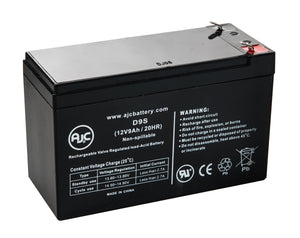SLA Battery Testing Challenges
Is my battery still good? It is a straight forward question that should have a straight forward answer, but it doesn’t. The State of Health (SoH) of your battery is complicated.
There are three indicators that ideally would be evaluated to determine if the battery is still good:
- Capacity – This is the ability for the battery to store energy
- Internal Resistance – This is the capability of the battery to deliver current
- Self-discharge – This reflects the mechanical integrity and conditions related to the stress of the battery
How to Test a Battery
The best way to test the charge of a battery is a multimeter. This device will give you a good indicator of how high or low a battery charge is.
Of the three, capacity is the leading indicator of the state of health for the battery. When new, a battery should deliver 100 percent of its rated capacity. If a battery rated at 5Ah delivers 5 amperes for an hour its capacity is 100 percent. If it delivers 5 amperes for only 30 minutes, then the capacity is 50 percent. But there is no convenient test for capacity without subjecting the battery to charge and discharge cycles. Knowing when to replace a battery then is problematic because of the lack of an accurate state of health test.
In addition, lead acid batteries start out at only about 85 percent capacity when new, and will reach 100 percent capacity as they are used. Once they hit 100 percent, they begin to lose capacity again, further confusing the issue.
When to Retire a Battery
Lacking a decent test, deciding when to retire a battery needs to be dependent on the application. If a battery is running critical medical equipment or essential military devices, then the batteries will likely be retired before they are near end of life. If the device failure results in danger to life and limb, then the possibility of getting more use out of a battery is not worth the savings.
For some applications, those in charge of the equipment will set parameters for cycle count or date when deciding on when to retire a battery. For an application where a weak battery means the equipment will not function, the battery will be swapped out much earlier than an application that can run as well on a weaker battery as a full capacity one.
Some batteries and portable devices have a fuel gage that shows how much energy remains in the battery. A full charge will show at 100 percent, regardless of the age of the battery. That means that a battery that is fully charged but has dropped in capacity will appear the same to the gage as a full capacity battery, giving a false sense that the device will continue to operate as it has in the past. But these gages show only the state of the charge, and not the capacity left in the battery and the device will stop working more quickly with a diminished capacity battery.
Because SLA batteries are sealed and maintenance free, there is no single test to get the SoH for the battery. If the battery is powering a critical function err on the side of caution and replace the battery early. Maybe the older battery can have a second life in a noncritical machine or vehicle.
The battery can be recycled. It will be taken apart, and its components can be re-used in new batteries, or neutralized and put back into the environment.
Find Your Replacement Battery
Browse our website to see if we have a match for your replacement battery
Browse Batteries

